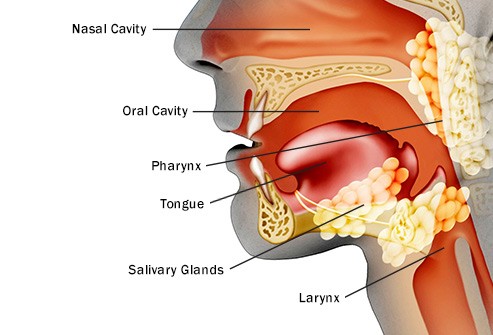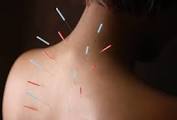
Diagnosed with Cancer? Your two greatest challenges are understanding cancer and understanding possible side effects from chemo and radiation. Knowledge is Power!
Learn about conventional, complementary, and integrative therapies.
Dealing with treatment side effects? Learn about evidence-based therapies to alleviate your symptoms.
Click the orange button to the right to learn more.
- You are here:
- Home »
- Blog »
- side effects ID and prevention »
- Healing Trismus, Xerostomia, Mucositis
Healing Trismus, Xerostomia, Mucositis

“These findings highlight the necessity of early preventive physiotherapy programs to reduce trismus occurrence…”
I’m not a head & neck cancer survivor. But I did have local radiation therapy to my neck. So when I read the articles below about the side effect called trismus, I lumped it in along with two of the radiation-induced side effects that I do struggle with, xerostomia and dysphagia.
Living with cancer since early 1994 has taught me that managing cancer is just as important as managing short, long-term and late stage side effects. Both go hand in hand when it comes to your cancer diagnosis.
To give an example of what I mean, consider trismus, xerostomia or dysphagia. When you are considering your cancer diagnosis and possible treatment plan, it makes sense to consider any/all possible side effects at the same time.
When you are thinking about local radiation to your jaw/neck area to zap, in my case, a myeloma lesion but in the case of a H&N survivor, radiation to zap a tumor in your mouth, neck, etc. it makes sense for you to know that you will
- reduce your risk of relapse
- reduce your risk of side effects- trismus/xerostomia/dysphagia
- enhance your quality of life
all by planning hyperbaric oxygen therapy as soon as your course of radiation therapy concludes. BTW, you will need to get your oncologist to order the HBOT so that your medical insurance will cover the treatment.
I focused on HBOT above however, I could have focused on other evidence-based, non-toxic therapies shown to enhance the efficacy of radiation while you reduce your risk of radiation damage.
Like I said, cancer treatment goes hand in hand with managing the side effects of that cancer treatment.
Are you considering cancer treatments? Have you already had chemo or radiation and you are struggling with side effects of that treatment? Scroll down the page, post a question or comment.
I will reply to you ASAP.
Hang in there,
David Emerson
- Cancer Survivor
- Cancer Coach
- Director PeopleBeatingCancer
Hyperbaric Oxygen Therapy is a remarkably effective therapy- read more
- Hyperbaric Oxygen Therapy, Alzheimer’s, Dementia
- Multiple Myeloma- HBOT for Stem Cell Transplants
- Myeloma – RILP, CIPN, Myelopathy?
- Whole-brain Radiation- Metastasis?
- Identify, Heal Prostate Cancer Radiation Damage
- Recurrent, HPV, Head, Neck Cancer- Therapies
Trismus Occurrence and Link With Radiotherapy Doses in Head and Neck Cancer Patients Treated With Chemoradiotherapy
“Chemoradiotherapy (CRT) for head and neck cancer (HNC) induces side-effects, including trismus, which impairs quality of life by causing difficulty to eat, speak, and maintain good oral hygiene, and by altering social life…
Head and neck cancers (HNC) include cancers of the oral cavity, pharynx, larynx, paranasal sinuses, nasal cavity, and the salivary glands…
Conclusion: Trismus occurrence differed according to radiation dose and cancer location. These findings highlight the necessity of early preventive physiotherapy programs to reduce trismus occurrence…
Trismus: Treatment, Causes, and Symptoms
Trismus is more commonly temporary than permanent. But the earlier you start treatment, the better the chance for a greater recovery. Some treatment options include:
- Use of a jaw-stretching device. These devices fit between the upper and lower jaw. A physical therapist will tell you which stretches to perform and how often.
- Medication. Your doctor may recommend or prescribe a muscle relaxant, pain reliever, or anti-inflammatory medication. Some research suggestsTrusted Source that combining corticosteroidsand nonsteroidal anti-inflammatory drugs may be effective at decreasing post-operative trismus.
- Physical therapy. This typically involves massaging and stretching the jaw to help loosen the muscles and decrease pain.
- Dietary changes. Following a soft food diet and avoiding hard, crunchy foods is often recommended to ease pain until symptoms improve.
- Acupuncture. While more studies are still needed, some research suggestsTrusted Source that acupuncture could be beneficial for muscle relaxation and pain management in disorders affecting the jaw muscle.
- Craniosacral therapy. This gentle, hands-on form of alternative therapy has been shownTrusted Sourceto help reduce chronic pain. Craniosacral therapy is often performed by chiropractors, massage therapists, and osteopaths…”
Home remedies
Together with medical intervention, there are things you can do at home to help relieve trismus and prevent it from worsening. You can try these two or three times during the day.
- Massage. Find the areas of your jaw that are painful and, moving your fingers in a circular motion, massage the area for about 30 seconds.
- Stretch your neck. Tuck your chin into your chest and hold for 30 seconds, then bring your head back and hold for another 30 seconds. Similarly, move your head to the left and then the right. Finally, move your head in a circular motion.
- Avoid clenching your jaw shut or grinding your teeth together. This can worsen jaw tightness and pain.
- Take a magnesium supplement. Magnesium is an important mineral involved in pain regulation. One 2020 studyTrusted Source also found that taking magnesium tablets or lozenges before and after oral surgery decreased the severity of postoperative pain and trismus.
- Try using CBD. Although more research is needed, some studies suggestTrusted Source that applying CBD oil topically could help relax the jaw muscles and decrease pain.
- Limit caffeine intake. Caffeine may worsen trismus by tighteningTrusted Source the jaw muscle. For some people, it could also cause anxiety, which may also lead to jaw clenching.
- Heat therapy. Placing a hot, moist towel on the jaw for 15 minutes each hour can relax the muscles and promote blood flow.
Hyperbaric oxygen treatment of mandibular osteoradionecrosis
“Patients with ORN with indication for surgical treatment were randomised to either group 1: surgical removal of necrotic mandibular bone supplemented by 30 pre- and 10 postoperative HBO exposures at 243 kPa for 90 min each, or group 2: surgical removal of necrotic bone only.
Primary outcome was healing of ORN one year after surgery evaluated by a clinically adjusted version of the Common Toxicity Criteria of Adverse Events (CTCAE) v 3.0.
Secondary outcomes included xerostomia, unstimulated and stimulated whole salivation rates, trismus, dysphagia, pain,..
Results- In group 1, 70% (21/30) healed compared to 51% (18/35) in group 2. HBO was associated with an increased chance of healing independent of baseline ORN grade or smoking status as well as improved xerostomia, unstimulated whole salivary flow rate, and dysphagia…



